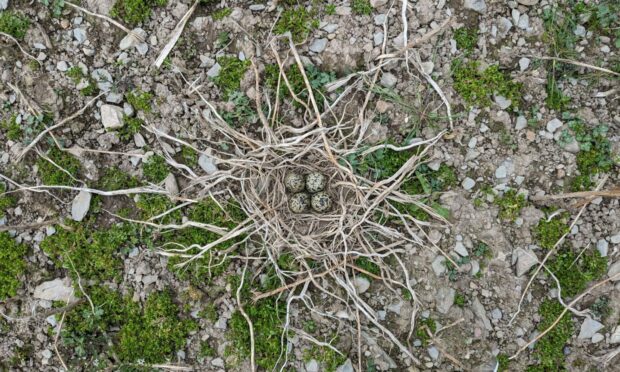Farmers and conservationists are witnessing significant early progress following a new project to reverse the serious decline in the population of Lapwings.
The project, led by SAC Consulting, includes farmers, RSPB Scotland and NatureScot, who have come together to boost the population of one of Scottish farmland’s most loved birds.
It comes as population figures for the birds had plummeted across Scotland – and the rest of the world – in recent years, despite being the focus of agri-environmental schemes.
“Farmland is critical for the birds’ future as they nest in a variety of rural habitats including wetlands, grasslands and crops,” said SAC Consulting’s Senior Consultant and Area Manager Jennifer Struthers.
“As the birds’ nest on the ground, they can be prone to predation, disturbance from curious livestock and agricultural operations. The result is they typically experience very low breeding success.”
However, a glimmer of hope has emerged through a nesting management trial which has been led by the Clyde Valley Wader Group (CVWG) with funding from NatureScot.
“Lapwings had very high levels of hatching success in the plots which were specifically introduced onto the farms to help them,” added Ms Struthers.
“About 75% of nests hatched across five trial fields, compared to typically 20% or less in grazed pastures.”
Kenny Johnstone from Boghouse and Eastertown farms at Crawfordjohn has been heavily involved in the project from the beginning.
“The Clyde Valley Wader Group has given stakeholders a much more productive, reactive, honest and enjoyable environment to work together in the best interests of wader birds,” he said.
“Having seen the success of a local brassica plot in the area for Lapwings, we were happy to try a brassica crop on an 18-acre field at Eastertown farm which we hoped would also benefit our farming business.
“We have been able as a group with funding to be flexible with grazing and ploughing to encourage as much nesting and hatching success as possible and are delighted the results are looking good.
“It feels very good to be able to work together and react effectively to create projects which ultimately lead to better nesting and hatching success for ground nesting birds in our area. That is something we all want to see.”
RSPB Scotland’s Senior Conservation Advisor, Dan Brown, said: “We have followed 600 nests in the last few years. Using trail cameras and tiny devices that record nest temperatures, we’ve massively improved our understanding of where and why nests did well, and where they don’t.”
